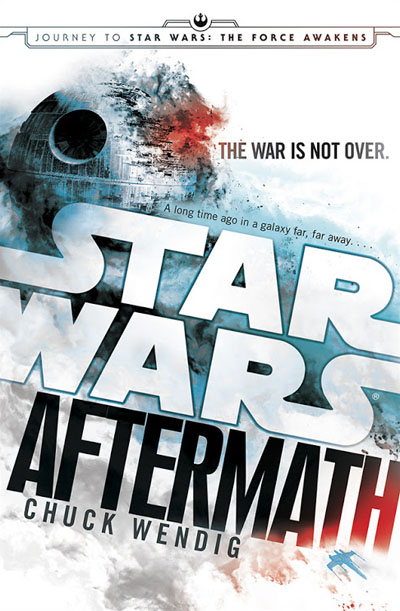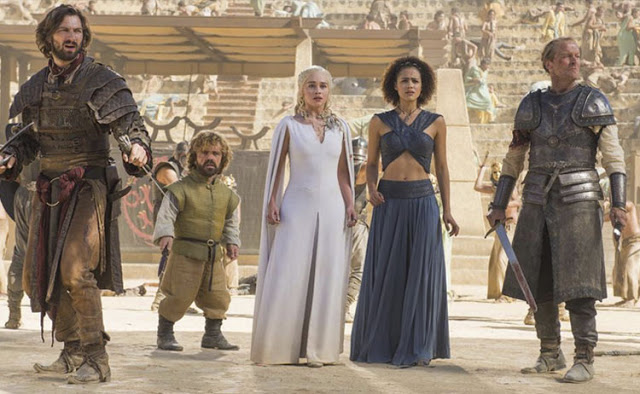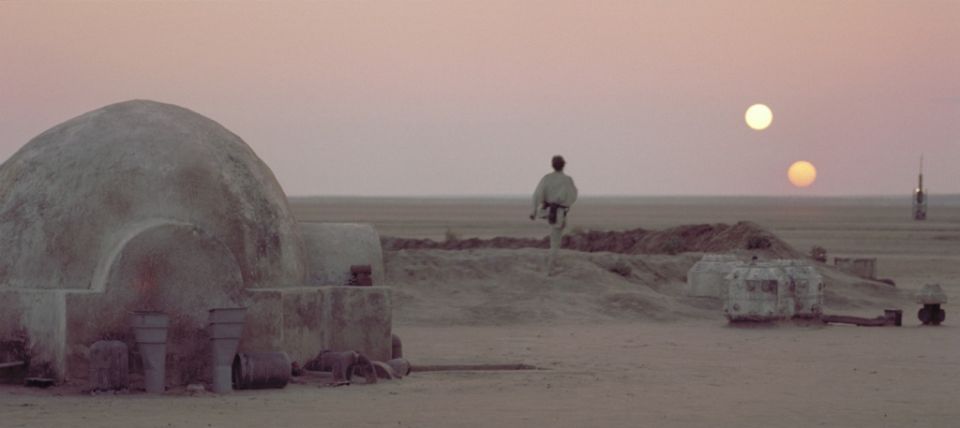 This is the first piece in a week of articles dedicated to Aftermath, the first post-Endor novel of the new EU. Because of the event nature of this flagship in the Journey to The Force Awakens series, Eleven-ThirtyEight will present multiple articles on different aspects of the novel instead of publishing our traditional analytical review of the book. As the plan stands right now, you can look forward to a piece on the writing style on Wednesday and one on continuity on Friday. We’re looking forward to reading our colleagues’ takes on these aspects of the novel!
This is the first piece in a week of articles dedicated to Aftermath, the first post-Endor novel of the new EU. Because of the event nature of this flagship in the Journey to The Force Awakens series, Eleven-ThirtyEight will present multiple articles on different aspects of the novel instead of publishing our traditional analytical review of the book. As the plan stands right now, you can look forward to a piece on the writing style on Wednesday and one on continuity on Friday. We’re looking forward to reading our colleagues’ takes on these aspects of the novel!
Today, we’ll be discussing the political state of the galaxy after Endor. By necessity, it will include spoilers from Aftermath (but not from the other Journey to TFA novels, which contain critical info that we did not have when writing this piece). Stop reading now if you do not wish to be spoiled for this excellent novel – it is worth experiencing for itself. By necessity, we will not be discussing a lot of worthy topics. The novel’s incredible character diversity – which Wendig created out of a sense of realism – is not the subject of this piece. The pilot and mother Norra Wexley, probably the most interesting and welcome character to come out of this book, is not the subject of this article. The narrative structure and use of interlude chapters is not the subject of this article. These are all topics that absolutely deserve discussion, we won’t monopolize all the potential discussion items that Aftermath has to offer because our colleagues have their own takes on the book. We will, however, discuss Admiral Rae Sloane because she is magnificent and very relevant to the topic.
As everyone knows, Return of the Jedi ended with the death of the Galactic Emperor and celebrations throughout the galaxy. Less clear was the outcome of that battle – the Legends Expanded Universe had many of these celebrations (especially on Coruscant) quickly suppressed and the war with the Empire went on for years, though it was resolved far too quickly for some tastes (including our own). With the canon reset, it is unclear if the Empire would fall so quickly and previews for Shattered Empire and the Uprising game appeared to suggest the Empire would last for quite a while. Early previews for Battlefront spilled the existence of the New Republic, which was apparently adopted pretty soon. Despite all these bits of info gleaned from various previous though, it wasn’t until Aftermath that we finally got a true picture of the post-Endor state of the galaxy. Neither past EU nor previews really gave it away and it was an open question how things would turn out.


 We are on the cusp of an awakening. Okay, fine, that was a shameless ripoff from the teasers, but the point stands. We are about to have a large amount of Star Wars content released rapidly in the lead up to The Force Awakens. I’m excited, of course; as a post-ROTJ fan in my heart and soul, we’re finally getting into my favorite content. The things a lot of us have been waiting for. Even for the casual fans or those who aren’t especially familiar with Star Wars, suddenly it’s everywhere around us.
We are on the cusp of an awakening. Okay, fine, that was a shameless ripoff from the teasers, but the point stands. We are about to have a large amount of Star Wars content released rapidly in the lead up to The Force Awakens. I’m excited, of course; as a post-ROTJ fan in my heart and soul, we’re finally getting into my favorite content. The things a lot of us have been waiting for. Even for the casual fans or those who aren’t especially familiar with Star Wars, suddenly it’s everywhere around us. ![24397040[1]](http://eleven-thirtyeight.com/wp-content/uploads/2015/08/243970401-210x300.jpg) If asked about an “alternate universe Star Wars story,” most people might immediately bring the Star Wars Tales comics to mind. Others might bring to mind the old Infinities comics exploring different takes on the Original Trilogy. A few might think of alternate universe scenarios in video games, such as the dark side endings to various games or The Force Unleashed franchise allowing its pet character Starkiller to kill all of our beloved heroes. A really cheeky person might ask if we meant the Legends Expanded Universe. Alternate universe stories might be common in other franchises – especially comic books – but Star Wars rarely draws from that well, except in fan-created works. Even most Star Wars video games would fall into whatever was the canon continuity at the time. Though the obsession of Star Wars with fitting everything into continuity could be the subject of its own article, it’s still strikingly odd that Star Wars almost never consciously creates alternate universe stories. Taking aside the alternate endings for video games, only Dark Horse committed to alternate universe content in any consistent way. The novels conspicuously never touched it, except for early works of dubious continuity value. (Before anybody asks, no, this is not a “Bring Back Legends” article)
If asked about an “alternate universe Star Wars story,” most people might immediately bring the Star Wars Tales comics to mind. Others might bring to mind the old Infinities comics exploring different takes on the Original Trilogy. A few might think of alternate universe scenarios in video games, such as the dark side endings to various games or The Force Unleashed franchise allowing its pet character Starkiller to kill all of our beloved heroes. A really cheeky person might ask if we meant the Legends Expanded Universe. Alternate universe stories might be common in other franchises – especially comic books – but Star Wars rarely draws from that well, except in fan-created works. Even most Star Wars video games would fall into whatever was the canon continuity at the time. Though the obsession of Star Wars with fitting everything into continuity could be the subject of its own article, it’s still strikingly odd that Star Wars almost never consciously creates alternate universe stories. Taking aside the alternate endings for video games, only Dark Horse committed to alternate universe content in any consistent way. The novels conspicuously never touched it, except for early works of dubious continuity value. (Before anybody asks, no, this is not a “Bring Back Legends” article)